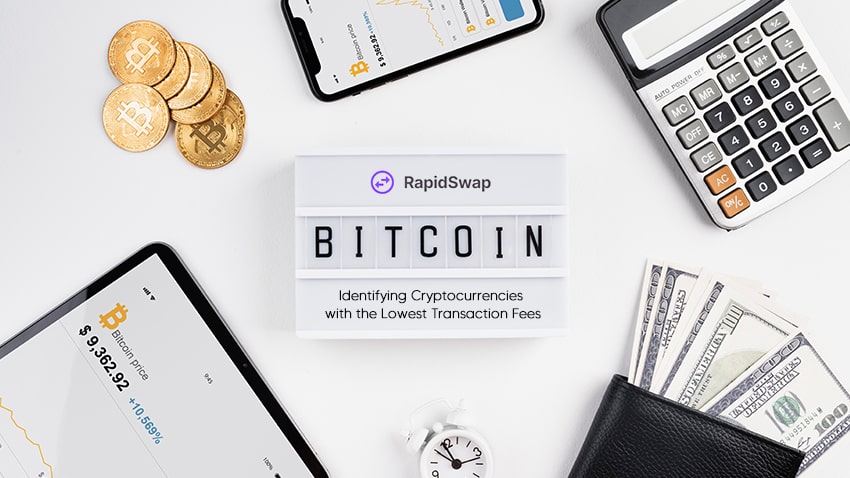Cryptocurrencies have revolutionized the financial landscape by offering decentralized and often borderless transactions. However, as more people delve into the world of digital assets, they quickly discover that along with the potential for significant gains, there are also hidden costs—most notably, transaction fees. These fees can vary widely across different cryptocurrencies and can significantly impact your bottom line, especially if you’re trading or transferring assets frequently. Understanding which cryptocurrencies offer the lowest transaction fees can help you maximize your returns and manage your investments more effectively.
Understanding Cryptocurrency Transaction Fees
Before diving into the specific cryptocurrencies with low transaction fees, it’s essential to understand what these fees are and why they exist. Transaction fees in the cryptocurrency world are the costs associated with moving your assets from one wallet to another. These fees can differ not only from one cryptocurrency to another but also within the same cryptocurrency, depending on the network’s current demand and the type of transaction you’re performing.
Types of Transaction Fees
Cryptocurrency transaction fees can be broadly categorized into three types: network fees, exchange fees, and wallet fees. Each of these fees serves a different purpose and can vary significantly depending on various factors.
- Network Fees:
- What They Are: Network fees are charges paid to the blockchain network itself. These fees are typically used to compensate miners or validators who process and confirm transactions on the blockchain.
- How They’re Determined: Network fees can fluctuate based on the current demand for the blockchain network. When the network is congested, fees tend to rise because users are essentially bidding to have their transactions processed more quickly. Conversely, during periods of low demand, these fees can be minimal.
- Exchange Fees:
- What They Are: Exchange fees are the costs associated with executing transactions on a cryptocurrency exchange. These fees are typically charged by the exchange platform as a percentage of the transaction value.
- How They’re Determined: Exchange fees can vary depending on the platform you use. Some exchanges offer tiered fee structures, where frequent traders or those dealing in large volumes can enjoy lower fees. These fees are a primary revenue source for exchanges, covering costs like security, platform maintenance, and customer support.
- Wallet Fees:
- What They Are: Wallet fees are charges that may be incurred when moving cryptocurrency into or out of a digital wallet. Not all wallets charge fees, but some may, especially if they offer additional services like enhanced security or multi-currency support.
Cryptocurrencies with Low Transaction Fees
Given the different types of fees, it’s clear that not all cryptocurrencies are equal when it comes to transaction costs. For investors and traders looking to minimize these costs, choosing the right cryptocurrency can make a significant difference. Here are some cryptocurrencies known for their low transaction fees:
1. Litecoin (LTC)
Litecoin is often referred to as the “silver to Bitcoin’s gold,” and one of its key advantages is its low transaction fees. Litecoin was designed to offer faster transaction times and lower costs compared to Bitcoin. The network’s efficiency allows it to process transactions with minimal fees, making it a popular choice for those looking to transfer value without incurring high costs.
- Average Transaction Fee: Typically a few cents, depending on network demand.
- Use Case: Ideal for everyday transactions and transferring funds between exchanges.
2. Ripple (XRP)
Ripple’s XRP is another cryptocurrency known for its low transaction fees. XRP was created with the specific goal of facilitating fast and inexpensive cross-border payments. The network’s consensus algorithm enables transactions to be processed within seconds, with fees that are fractions of a cent.
- Average Transaction Fee: Less than $0.01 per transaction.
- Use Case: Excellent for international remittances and large-value transfers.
3. Stellar (XLM)
Stellar was designed to make financial transactions more accessible, particularly for cross-border payments. Like Ripple, Stellar offers extremely low transaction fees, making it an attractive option for those looking to transfer money internationally. The network’s efficiency and low costs have made it popular among financial institutions and individual users alike.
- Average Transaction Fee: Typically around 0.00001 XLM, which is a tiny fraction of a cent.
- Use Case: Suited for microtransactions and cross-border transfers.
4. Nano (NANO)
Nano is a cryptocurrency that aims to offer feeless and instant transactions. Unlike many other cryptocurrencies, Nano doesn’t require miners or validators, which eliminates the need for network fees entirely. This makes Nano one of the most cost-effective options for transferring value, especially in smaller amounts.
- Average Transaction Fee: Zero fees.
- Use Case: Perfect for small transactions and peer-to-peer payments.
5. Ethereum (ETH) Layer 2 Solutions
While Ethereum itself is notorious for its high gas fees, especially during periods of network congestion, the emergence of Layer 2 solutions like Optimism and Arbitrum has significantly reduced these costs. Layer 2 solutions process transactions off the main Ethereum chain, allowing users to enjoy the benefits of Ethereum’s ecosystem without paying exorbitant fees.
- Average Transaction Fee: Varies depending on the Layer 2 solution but generally much lower than Ethereum’s mainnet fees.
- Use Case: Ideal for users who want to interact with Ethereum’s dApps without incurring high fees.
Choosing the Right Cryptocurrency for Low Fees
Transaction fees, though often overlooked, can significantly impact the profitability of cryptocurrency trading and investing. By choosing cryptocurrencies known for their low fees, such as Litecoin, Ripple, Stellar, and Nano, or by using Layer 2 solutions on Ethereum, investors can keep more of their hard-earned gains. As the crypto space continues to evolve, staying informed about the most cost-effective options for transferring value will be crucial for maximizing returns and minimizing unnecessary expenses.

